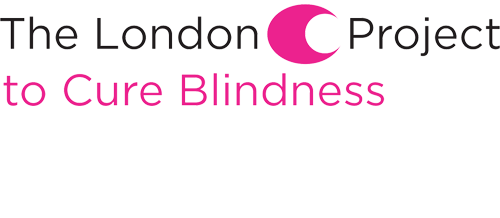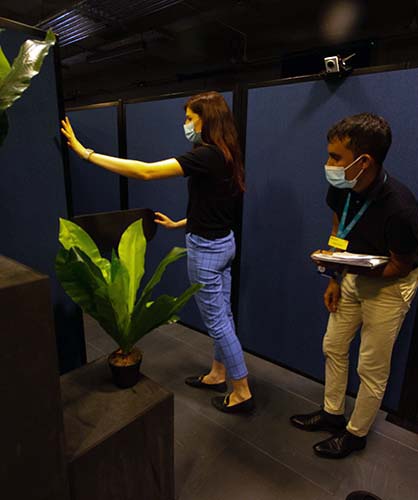NIHR Moorfields Clinical Research Facility
Since 2007, the NIHR Moorfields Clinical Research Facility (CRF) has pioneered the translation of laboratory discoveries for the benefit of patients with eye conditions. This includes the first gene therapy to cure an inherited human disease and the first stem cell membrane therapy to treat the most common cause of blindness in the developed world. Such landmark medical advances have cemented our pre-eminent international reputation for ophthalmic experimental medicine attracting biotech, device and pharmaceutical industry investment that is underpinned by our NIHR Biomedical Research Centre (BRC) at Moorfields Eye Hospital and UCL Institute of Ophthalmology.

Our Aims
- Widen our patient-oriented experimental medicine and early phase trial portfolio to serve our diverse community
- Train and develop world-class researchers in ophthalmology
- Grow our public and industry partnerships.
Research highlights
First-in-man studies
HORNBILL Trial
A first-in human trial to study the safety and tolerability of single rising intravitreal dOses (open label, non-randomised, uncontrolled) and, in addition, the early biological response of multiple intravitReal dosing (single-masked, raNdomized, sham-controlled) of BI 764524 in panretinaL photocoagulation (PRP) treated proLiferative diabetic retinopathy (PDR) patients with diabetic macular ischemia (DMI) – the HORNBILL Study.
BI 1418 0001
Safety, tolerability and pharmacokinetics of single rising intravitreal doses and multiple intravitreal dosing of BI 754132 in patients with geographic atrophy secondary to age-related macular degeneration (open label, non-randomised, uncontrolled).
PARTRIDGE Study
A first-in-human trial to study safety and tolerability of single rising intravitreal doses (oPen label, non-randomized, uncontrolled) and, in addition, the early biological Response of mulTiple intravitreal doses (double-masked, RandomIzed, shamcontrolleD) of BI 765128 in panretinal photocoaGulation (PRP) treated diabetic rEtinopathy (DR) patients with diabetic macular ischemia (DMI) – the PARTRIDGE Study.
Stem cell studies
The London Project to Cure Blindness Phase 1, open-label, safety and feasibility study of implantation of TLPCB-05206388 (human embryonic stem cell derived retinal pigment epithelium (RPE) living tissue equivalent) in subjects with acute wet agerelated macular degeneration and recent rapid vision decline
Phase 1, open-label, safety and feasibility study of implantation of TLPCB-05206388 (human embryonic stem cell derived retinal pigment epithelium (RPE) living tissue equivalent) in subjects with acute wet agerelated macular degeneration and recent rapid vision decline
Our latest Gene Therapy Trials
 Two current studies in the gene therapy portfolio are:
Two current studies in the gene therapy portfolio are:
- A study in normally-sighted participants and in participants with X-linked RetinitisPigmentosa (XLRP) associated with variants in the etinitis pigmentosa guanosinetriphosphatase regulator (RPGR) gene (RPGR-XLRP) to validate the Vision-Guided Mobility Assessment for use in natural history studies and therapeuticclinical trials of adult, adolescent and child patients with Inherited Retinal Diseases
- An open label, multi-centre, Phase I/II dose escalation trial of arecombinant adeno-associated virus vector (AAV2/8-hG1.7p.cohCNGA3for genetherapy of children with Achromatopsia owing to defects in CNGA3
How to find us
NIHR Clinical Research Facility
Moorfields Eye Hospital NHS Foundation Trust
162 City Road
London
EC1V 2PD
Contact us
moorfields.crfenquiries@nhs.net





